Exorcism, expelling malevolent spirits, spans millennia and diverse faiths. Akash explores its origins, methods, significance across religions, and modern scientific understanding, exclusively for Different Truths.
Exorcism, the practice of expelling malevolent spiritual entities from individuals or places, has existed for millennia. While commonly associated with Christianity, particularly Catholicism, the practice transcends religious and cultural boundaries, appearing in diverse traditions such as Islam, Hinduism, Buddhism, Judaism, and indigenous belief systems. This article is going to briefly discuss the origins, methodologies, and significance of exorcism across different faiths, as well as the modern, scientific understanding of this phenomenon from psychological and anthropological perspectives.
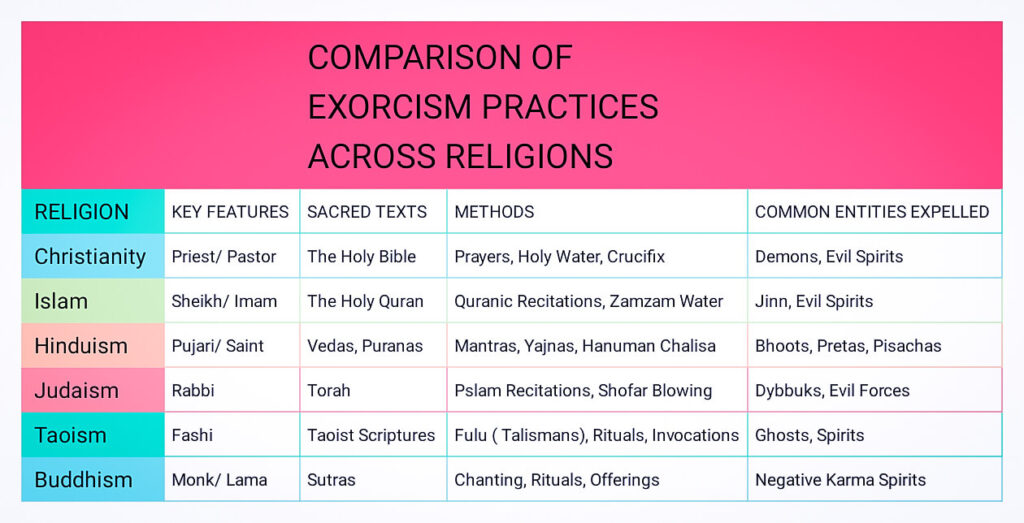
Exorcism in Christianity
Christianity is perhaps the most widely recognized religion associated with exorcism, due in part to popular culture’s depiction of dramatic demonic possessions and priestly interventions.
Catholicism: In Catholic tradition, exorcisms are performed by ordained priests who receive explicit authorisation from a bishop. The Catholic Church distinguishes between major and minor exorcisms. Minor exorcisms are often part of baptismal rites, while major exorcisms follow the Rituale Romanum, a set of guidelines established by the Church. Famous Exorcist Father Gabriele Amorth once said in his books that exorcisms can last from minutes to hours.
The Catholic Church teaches that exorcists must first rule out psychological or medical conditions before performing an exorcism. It’s obvious that they first consult the Psychologist before starting any of the procedures. The ritual itself involves invoking the name of Jesus Christ, reciting prayers, using sacramental things like holy water, and calling upon saints and archangels, particularly Michael, to aid in the expulsion of the demon. Some cases reportedly require multiple sessions over several years to completely free an individual from demonic influence.
Protestantism: Protestant denominations approach exorcism differently. Many Evangelical and Pentecostal churches perform deliverance ministry, which involves prayers, laying on of hands, and calling upon the Holy Spirit to remove demons. Unlike Catholicism, Protestant exorcists do not require official church authorization. Instead, they rely on the perceived spiritual authority of the believer. The emphasis is on faith and the direct intervention of Jesus Christ.
Eastern Orthodoxy: The Eastern Orthodox Church holds that all priests have the authority to perform exorcisms, particularly during baptism. Orthodox exorcism rites involve prayers attributed to Saint Basil and Saint John Chrysostom. The Orthodox perspective sees exorcism as a broader spiritual struggle, where all Christians participate (mass prayer) in resisting demonic influences through their faith and devotion.
Exorcism in Islam
Islamic exorcism, known as Ruqya, involves reciting specific Quranic verses to drive out harmful spirits, or jinn. Islamic belief holds that jinn can possess individuals, causing physical or psychological disturbances with heavy impact in their personal lives. The Prophet Muhammad himself is said to have performed exorcisms, and he advised believers to recite the last three chapters of the Quran (Surah Al-Ikhlas, Surah Al-Falaq, and Surah An-Nas) for protection.
Islamic exorcisms may involve drinking or sprinkling Zamzam water (water from the Holy Well), applying attar (non-alcoholic perfumes, organic perfumes originated in Arab), and reciting Ayat al-Kursi (The Throne Verse). Healers may also engage in dialogue with the possessing spirit to determine its nature and intent. In extreme cases, exorcists command the entity to leave in the name of Allah.
Exorcism in Hinduism
Hinduism contains a rich tradition of exorcism rooted in Vedic and Tantric practices. Evil spirits (bhootas, pretas, and pisachas) are believed to haunt individuals or places, causing illness and misfortune. Exorcism rituals involve chanting sacred mantras, performing yajnas (fire sacrifices), and invoking deities like Hanuman, Narasimha, or Vishnu to dispel malevolent entities. In tantric practices purohits often invoke Maa Kaali by chanting holy mantras.
One of the most famous Hindu exorcism sites is the Mehandipur Balaji Temple in Rajasthan, where thousands of devotees undergo rituals believed to free them from possession. The Hanuman Chalisa, a devotional hymn dedicated to Hanuman, is commonly recited during exorcisms.
Exorcism in Buddhism
Buddhist traditions vary in their approach to exorcism. Theravāda Buddhism emphasizes the recitation of protective scriptures, such as the Metta Sutta and Āṭānāṭiya Sutta, to ward off malevolent spirits. Tibetan Buddhism incorporates complex rituals, including the Gutor ceremony, where monks conduct purification rites to remove negative forces before the Tibetan New Year. This ceremony is often followed by a celebration, including food, drink, and music.
Buddhism generally views spiritual disturbances as manifestations of karma, requiring prayers, offerings, and acts of merit to restore balance rather than dramatic confrontations with evil forces.
Exorcism in Judaism
Jewish exorcism, or ibrāʾ al-maṣrūʿ, involves prayers, recitation of Psalms, and rituals led by a rabbi trained in Kabbalistic traditions. The ritual typically includes ten adult men (minyan) forming a circle around the possessed person while reciting Psalm 91 (from Hebrew Bible: Tanakh). The rabbi may blow a shofar (ram’s horn) to drive out the spirit.
Jewish texts, including the Talmud and writings of Rabbi Yehuda Fetaya, describe exorcisms performed using sacred names of God. However, Judaism generally emphasizes rational explanations for possession-like symptoms and often attributes them to psychological or social issues.
Exorcism in Taoism and Chinese Folk Religion
Taoist exorcism, performed by ritual specialists known as Fashi, involves chanting, the use of Fulu (protective talismans), and invoking deities to expel spirits. Some Taoist sects incorporate dramatic performances where exorcists wield weapons and strike themselves to demonstrate spiritual invulnerability.
In rural Chinese traditions, Tangki (spirit mediums) perform exorcisms through trance states, engaging in battles against demons to restore harmony. Ritual bloodletting and talismanic protections are common in folk Taoist exorcisms.
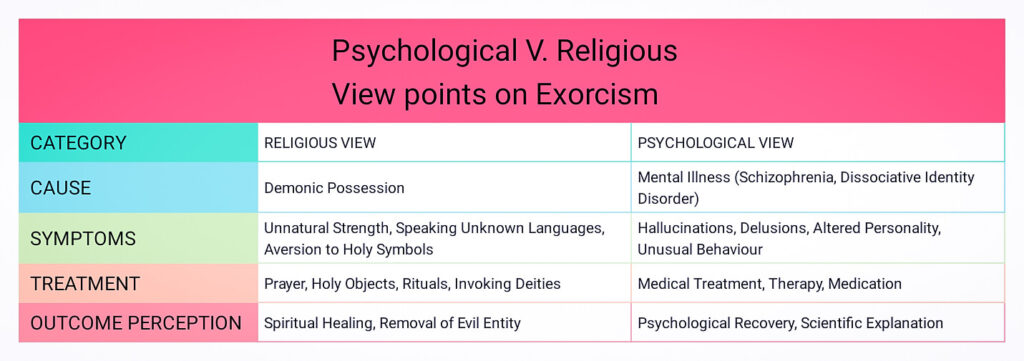
Modern Psychological and Scientific Perspectives
Contemporary psychology and psychiatry do not recognise demonic possession as a medical condition. Many cases of alleged possession align with symptoms of mental disorders such as schizophrenia, dissociative identity disorder, or Tourette’s syndrome. Some researchers argue that the efficacy of exorcism is largely due to the placebo effect and the power of suggestion.
Psychiatrist M. Scott Peck controversially supported the legitimacy of exorcism but faced criticism for blurring the lines between religion and science. Critics argue that exorcisms can be harmful, leading to neglect of proper medical treatment and reinforcing delusional beliefs in patients and heavy psychological damage.
Notable Exorcisms in History
Throughout history, documented exorcisms have captured public attention, often with tragic outcomes. Some of the most well-known cases include:
1. Anneliese Michel (1975): A German woman who underwent 67 exorcisms over ten months. She died of malnutrition, and her parents and priests were convicted of negligent homicide.
2. Robbie Mannheim (1949): The inspiration for The Exorcist, this case involved a teenage boy who allegedly exhibited supernatural phenomena. Jesuit priests performed multiple exorcisms before the case concluded. It grained huge amount popularity that time.
3. Michael Taylor (1974): A British man who, after an exorcism, brutally murdered his wife, leading to debates about the psychological dangers of exorcism.
4. Tanacu Exorcism (2005): A Romanian nun died after being bound and starved during an exorcism performed by a priest. The case sparked international outrage.
5. Amityville Case (1970s): In 1974, the Lutz family moved into a large Dutch Colonial house at 112 Ocean Avenue in Amityville, Long Island, New York. Just 28 days later the house fled into dark terror. Ed and Lorraine Warren investigated the case, concluding that the house was indeed haunted by malevolent spirits. Their researches were later immortalised in Jay Anson’s bestselling book “The Amityville Horror” (1974).
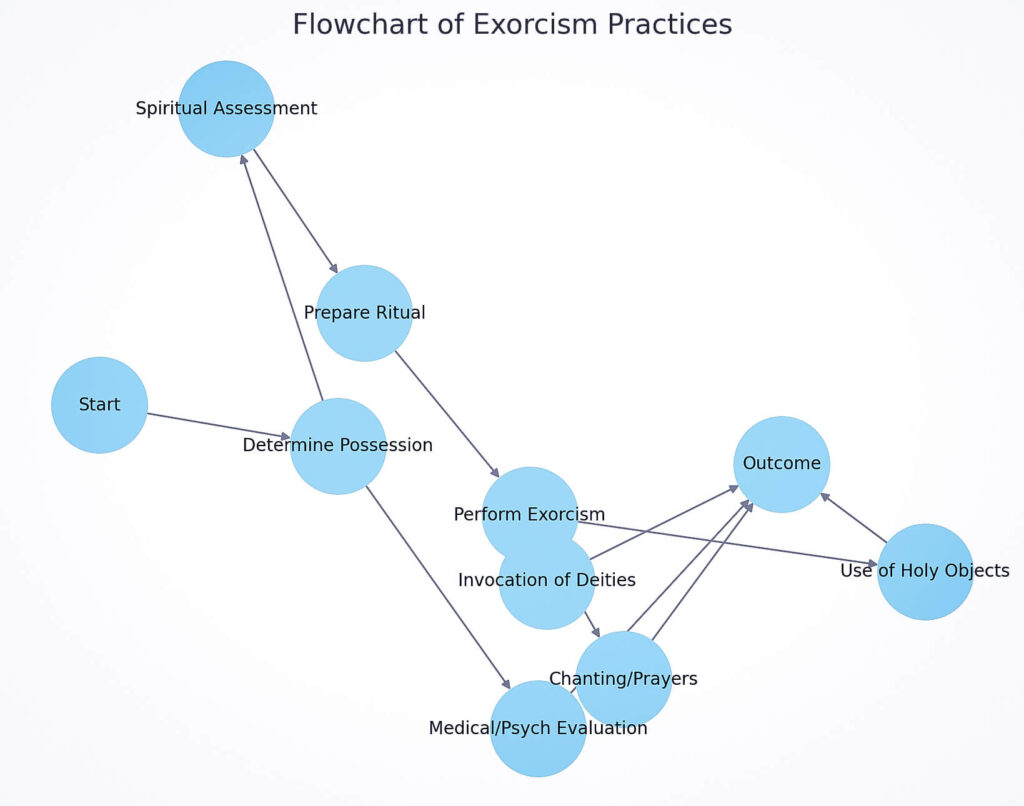
Exorcism in Popular Culture
Exorcism has been a staple of horror films and literature, with movies like The Exorcist (1973) shaping public perceptions of the practice. While dramatized portrayals exaggerate the reality of exorcisms, they reflect deep-seated fears of the unknown and the enduring human struggle with good and evil.
Contemporary media continues to explore exorcism, often blending folklore with psychological horror. Television shows, books, and documentaries dissect both historical and modern cases, fuelling debates about its validity.
Exorcism remains a compelling and controversial subject, deeply embedded in religious traditions worldwide. While some view it as a sacred rite with real spiritual power, others see it as an outdated practice with psychological explanations. As scientific understanding of mental health progresses, the role of exorcism in modern society will likely continue to be debated, balancing faith, culture, and medical science. Regardless of perspective, exorcism persists as a significant cultural phenomenon, embodying humanity’s enduring quest to confront the forces of darkness—whether external or internal.
Sources
1. The Amityville Horror (1974) by Jay Anson.
2. Anglican Rituals of Exorcism. (Excerpted from the Exeter Report of 2012).
3. De Exorcizandis Obsessis A Daemonio in the Rituale Romanum.
4. Reports by Chris Burton.
5. Articles by Gabriele Amorth.
6. The Book of Witches by Oliver Madox Hueffer.
7. Occulta by Sokol Books Ltd.
Picture design by Anumita Roy, Charts by the author

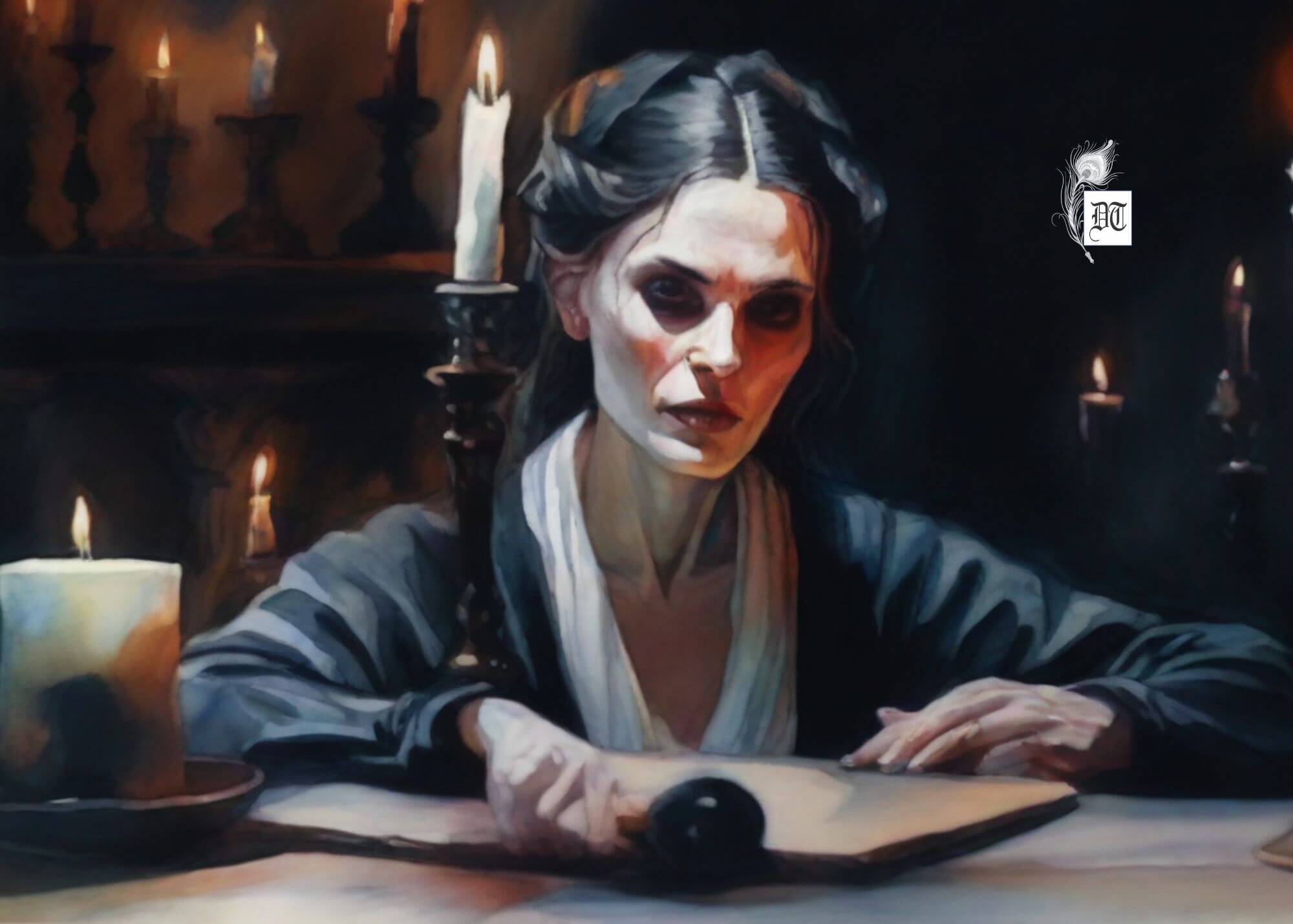

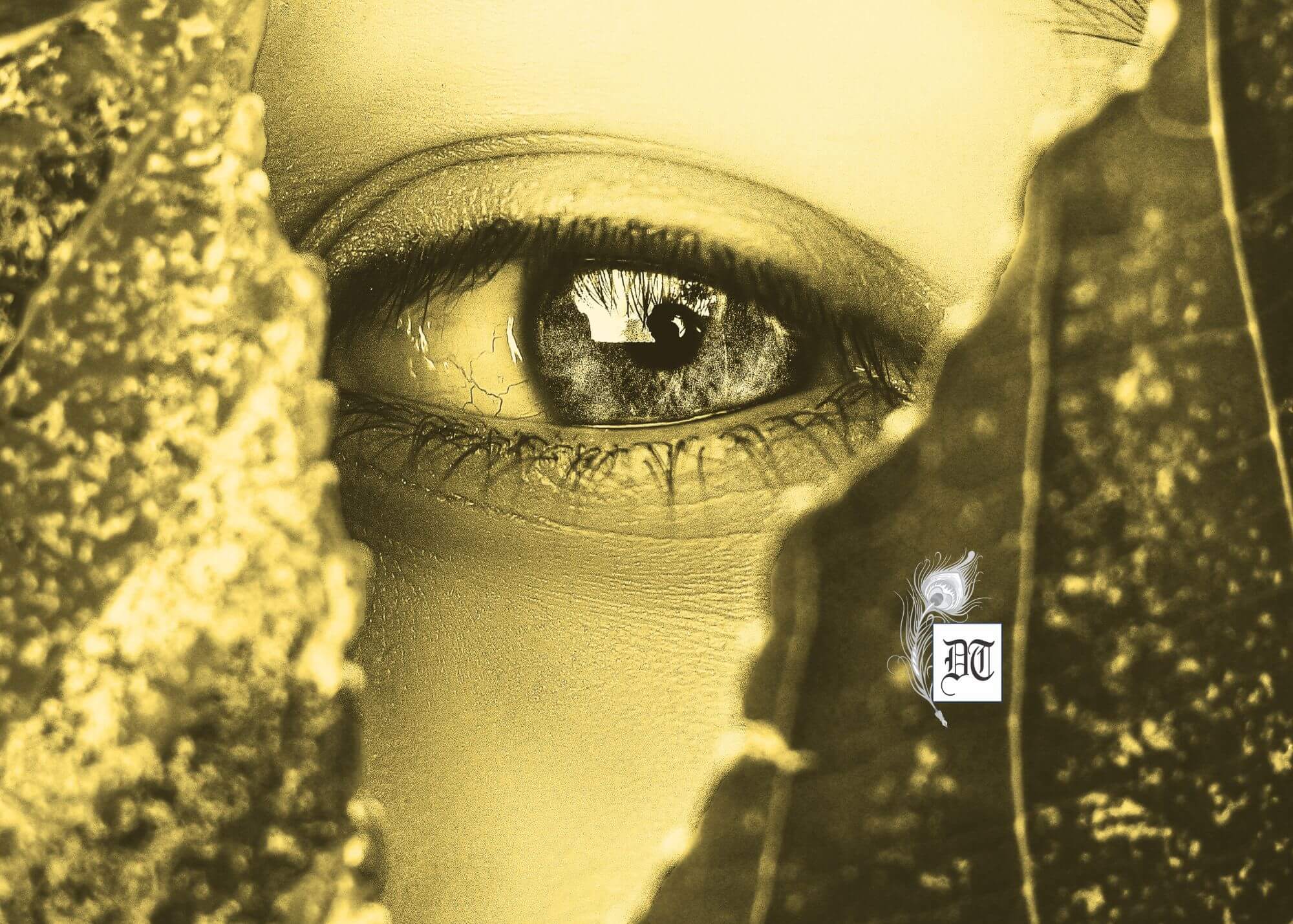


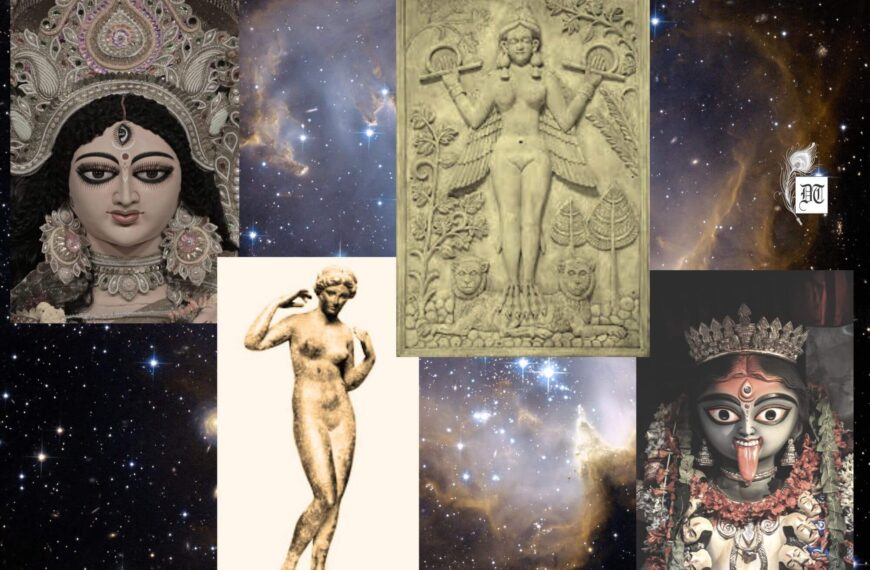
 By
By
 By
By
Very detailed analysis of the history son… Keep it up…
